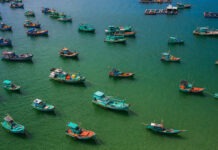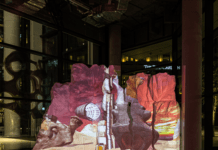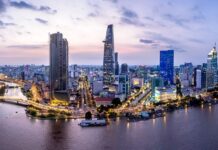From the splendor of Rome, the color of Venice’s Carnival, the art of Florence and the quaint trulli homes of Puglia, Italy is a country of year-long delights. Here are the best regions to visit.

Florence: The cradle of the Renaissance, Florence’s museums, palaces, and churches house some of the greatest artistic treasures in the world. The most popular and important sites in the city include the Cathedral, the Baptistery, the Uffizi, the Bargello, and the Accademia. The churches of Santa Maria Novella and Santa Croce are veritable art galleries, and the library of San Lorenzo is a magnificent exhibition of Michelangelo’s architectural genius.
Wander some of the oldest streets in the city until you reach the Arno River, cross the Ponte Vecchio, and experience the ‘newest’ area of Florence, the Oltrarno. Be sure to set aside time to see the vast and varied art collection housed in the Pitti Palace. Then, spend a day at the Boboli Gardens or climb the hill to the church of San Miniato al Monte to experience an enchanting view of Florence, Italy.

Venice: The romantic city of Venice is located in the Veneto region of Italy — one of the northernmost states. This ancient and historically important city was originally built on 100 small islands in the Adriatic Sea. Instead or roads, Venice relies on a series of waterways and canals.
Few cities can claim such a priceless art and history heritage as Venice. This unique city with its magical, spectacular scenery is not just beautiful; it is a real miracle of creative genius: a city built on mud, sand and the slime of a difficult, inhospitable landscape.
Its biggest attraction is the architecture — which is enhanced by the ancient canals that surround it. As well as Piazza San Marco and St. Mark’s Basilica, the city is home to the Gothic masterpiece Doge’s Palace. Not only is it a breathtaking example of Italian architecture, it is also the centre of Venice Carnival celebrations every year.
There are many places in Venice which characterize the city’s illustrious history and association with the arts and architecture. Take the Bridge of Sighs, for example, which is a white limestone masterpiece. The history of Venice can be discovered at either the Lace Museum or Fortuny Museum will take you on a journey of discovery. And most amazing is the Ca’ d’Oro — a Venetian-Gothic palace that also happens to be home to the Franchetti collection of Renaissance art.

Sicily: Sicily has long been a crossroads and crucible of Mediterranean culture, and the island today is a fascinating palimpsest in which Greek temples, Norman churches and Baroque palazzos emerge from the rich fabric. But it also has natural wonders aplenty, from the smoking craters of Mount Etna to the still relatively undiscovered beaches of the southern coast. This fascinating town of caves, rock churches and grottos has been transformed by new hotels and its Unesco World Heritage status – and for 2019 is one of two European Capitals of Culture (the other is Plovdiv, Bulgaria).

Veneto: Situated in Italy’s northeast, Veneto extends from the Dolomites to the Adriatic Sea, by way of an expansive range of hills and a valley furrowed by rivers, canals and the Po River Delta. It is a region with a thousand different faces, and expresses an extraordinary variety in its scenery: from the Dolomites, dipped in the crimson shades of the sunset, to the eastern shore of Lake Garda and Peschiera del Garda, Torri del Benaco and other tourist destinations. Long, sandy beaches alternate with well-known resorts such as Jesolo, Bibione, Cavallino and Caorle.
In this spectacular natural setting lies a rich cultural heritage that renders the Veneto such a fascinating region, from its cities of art to the magnificent Palladian villas scattered along the Brenta Riviera. In addition, small villages of Arquà Petrarca, Monselice, Asolo and Bassano del Grappa bring together the most typical aspects of this diverse and varied region.
Veneto is also an ideal destination for a vacation of comfort and relaxation, thanks to its possession of thermal waters with their valuable therapeutic properties: the gentle slopes of the Euganean Hills are home to the well-equipped facilities of the Euganean Spas.

Puglia: Spanning 400km from north to south, Puglia forms the heel of Italy, and is geographically diverse. More alluring is the hilly, forested Gargano promontory jutting out to the east, fringed by gently shelving, sandy beaches, seaside hotels and campsite villages. The best escape is to the southernmost tip, the Salentine peninsula where the terrain is rocky and dry, more Greek than Italian, and there are some beautiful coves and sea caves to swim in.
Puglia also has plenty of architectural interest, as each ruling dynasty left its own distinctive mark on the landscape. Perhaps most distinctive are the kasbah-like quarters of many towns and cities, a vestige of the Saracen conquest of the ninth century – the one at Bari is the biggest and most atmospheric. The Normans of Normandy endowed Puglia with splendidly ornate cathedrals, while the Baroque exuberance of towns like Lecce and Martina Franca are testament to the Spanish legacy. But if there is one symbol of Puglia that stands out, it is the imposing castles built by the Swabian Frederick II all over the province – foremost of which are the Castel del Monte (immortalized on the Italian five-cent euro coin) and the remnants of the palace at Lucera.























